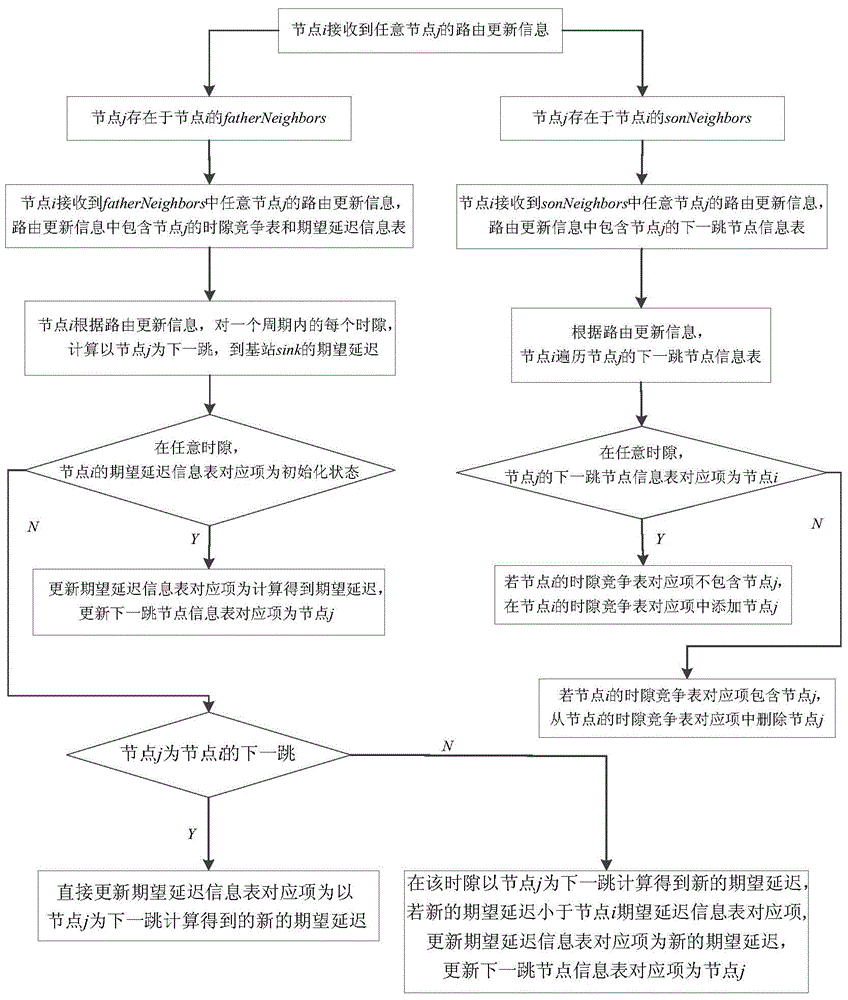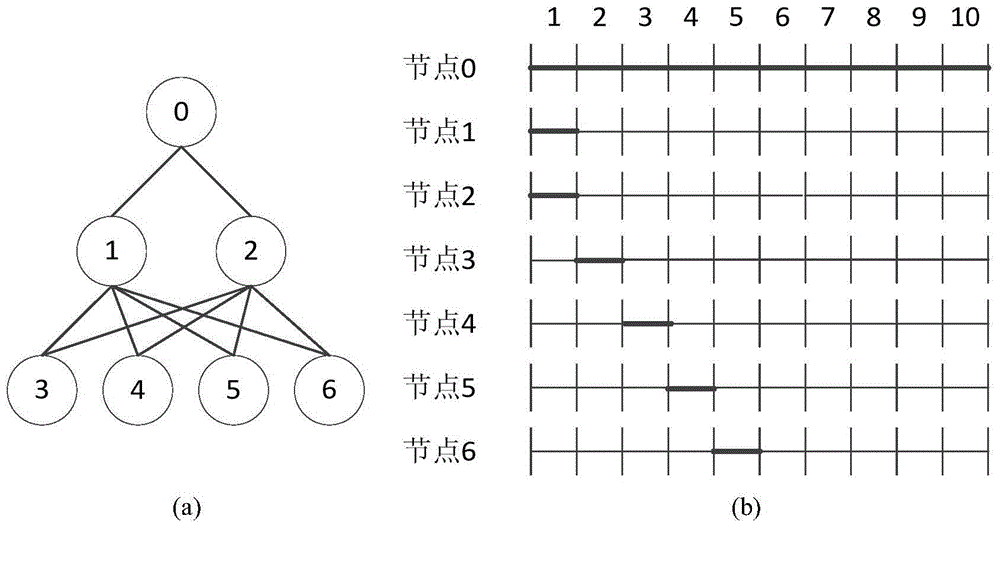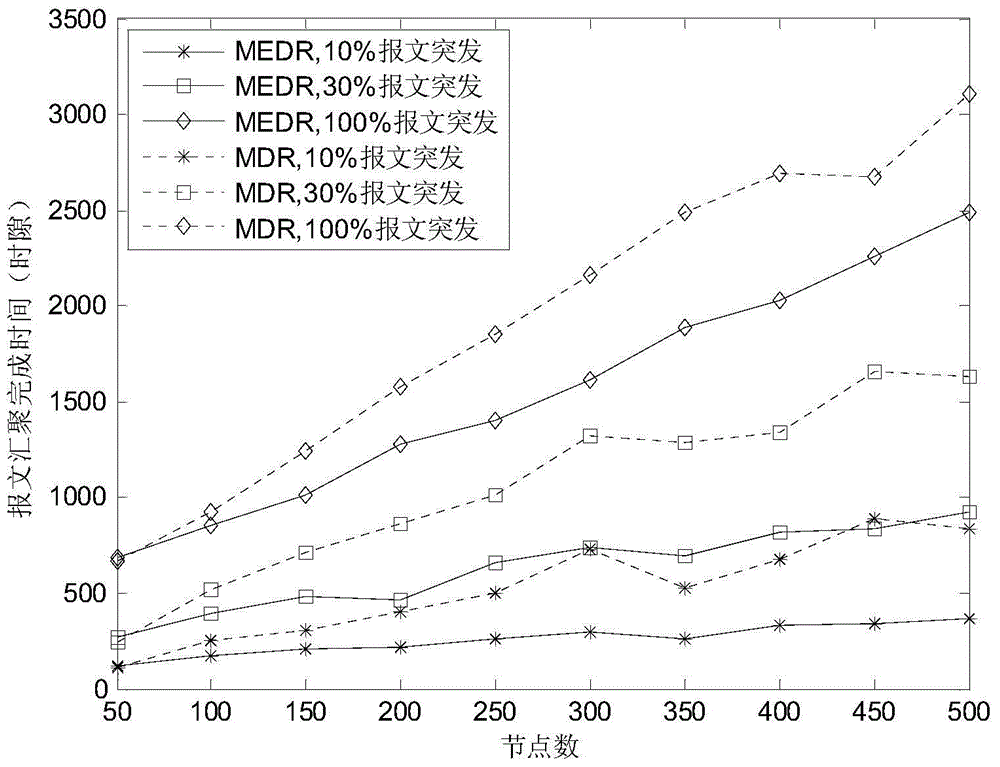Minimum expected delay routing method of duty cycle wireless sensor network
A wireless sensor, duty cycle technology, applied in wireless communication, network topology, electrical components, etc., can solve problems affecting message transmission delay, etc., to achieve the effect of improving effectiveness
- Summary
- Abstract
- Description
- Claims
- Application Information
AI Technical Summary
Problems solved by technology
Method used
Image
Examples
Embodiment 1
[0054] The whole network works in a synchronous cycle duty cycle mode. A cycle consists of T consecutive time slots, T≥1. According to application requirements, any node is in the working state in one or more time slots in the cycle T, and the rest The time slot is in a dormant state, and each node in the network determines its level according to the minimum hops away from the base station. maxLayer indicates that the node also includes a routing table, a time slot competition table, a parent neighbor table fatherNeighbors and a child neighbor table sonNeighbors, and the minimum expected delay routing method includes two parts: an initialization process and a routing update process.
[0055] Part 1, initialization process:
[0056] The initialization process is independent between nodes, specifically, all sensor nodes assign initial values to the content of their own routing table and slot competition table; the routing table includes the expected delay information table exp...
Embodiment 2
[0069] The minimum expected delay routing method of the duty cycle wireless sensor network is the same as that in Embodiment 1, wherein the expected delay time is
[0070] expDela y i ( t ) = Σ s = 1 SMAX P ij ( s ) × [ delay ij ( t , s ) + expDela y j ( ( t + delay ij ( t , s ) ) ...
Embodiment 3
[0081] The minimum expected delay routing method of the duty cycle wireless sensor network is the same as that of Embodiment 1-2. In this example, figure 2 The simple network shown in (a) describes the interlayer node routing update process between the 0th layer and the 1st layer in the layer-by-layer routing update process of the duty-cycle wireless sensor network minimum expected delay routing method of the present invention.
[0082] figure 2 (a) shows a duty-cycle wireless sensor network with a three-layer tree topology. Node 0 as a base station belongs to the 0th layer, nodes 1 to 2 are one hop away from node 0 to the first layer, nodes 3 to Node 6 is two hops away from node 0 and belongs to the third layer. The connection between nodes indicates that the nodes are connected to each other, because the minimum expected delay routing performs routing update strictly according to the hierarchical structure, and the transmission and reception of routing update information ...
PUM
 Login to View More
Login to View More Abstract
Description
Claims
Application Information
 Login to View More
Login to View More - R&D
- Intellectual Property
- Life Sciences
- Materials
- Tech Scout
- Unparalleled Data Quality
- Higher Quality Content
- 60% Fewer Hallucinations
Browse by: Latest US Patents, China's latest patents, Technical Efficacy Thesaurus, Application Domain, Technology Topic, Popular Technical Reports.
© 2025 PatSnap. All rights reserved.Legal|Privacy policy|Modern Slavery Act Transparency Statement|Sitemap|About US| Contact US: help@patsnap.com



